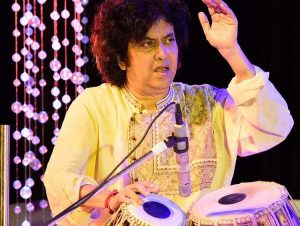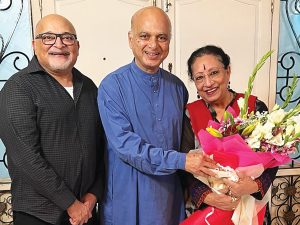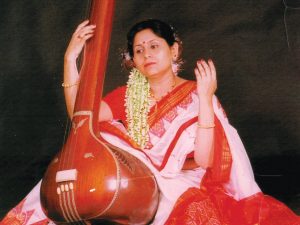
The Begum and I
By MOHAMED KHAKI
Diwana banana hai to diwana bana de, varna taqdeer tamasha na bana de.
One can only imagine the audience being driven diwani (crazy) hearing twenty-year-old Akhtaribai Faizabadi at a concert in 1934 in Patna.
Akhtari, a last-minute substitute for a senior artiste who failed to show up, was an instant hit with the listeners. One could say that her taqdeer (good fortune) that night did result in a tamasha (grand show), but not as the ironically implied madhouse of the couplet.
I still remember the first time I heard Begum Akhtar’s singing. I was barely in my teens when I came across a 78 rpm recording at my aunt’s home in Dar es Salaam.
Ae muhobbat tere anjaam pe rona aaya was unlike anything I had heard. The tonal quality, the forthright presentation of Shakeel Badayuni’s exquisite (and easy to understand) ghazal, the anguish that was packed into its rendition, and the simple, but highly effective accompaniment on harmonium and tabla had me hooked.
O love I despair at your outcome was the beginning of my lifelong affair with Begum Akhtar.
I must have played the record half a dozen times before my older cousin Karim muttered, “Enough already”. He more likely said, “I’ll give you a tight slap if you don’t stop it,” a not a very subtle but quite unambiguous and effective signal (from mostly older male relatives) to keep younger ones in line.
When I first heard her, Akhtari had made the transition from being Akhtaribai Faizabadi, daughter of Mushtaribai, a tawaif (courtesan) and a father who was from one of Lucknow’s elite families, to being the respectable Begum Akhtar, who was married to a prominent Lucknavi barrister, Ishtiaq Ahmed Abbas.
By the time I arrived in North America in early 1975, I had listened obsessively to her recordings, including Begum Akhtar Sings Ghalib, which remains my favourite to this day. I can only imagine how pleased Asadullah Mirza Ghalib, one of India’s most famous poets, would have been at hearing his words sung so beautifully and with so much passion.
Starting with Aah ko chaahiye ek umr asar hone tak and ending with Daayam padaa huaa tere dar par nahi hoon main, each ghazal on the album is truly a polished gem. Begum Akhtar sings the line Yaa rab zamaana mujhko mitaata hai kis liye in the last ghazal with almost a wail. I still get goosebumps listening to Ghalib’s cri-de-coeur O Lord, why is the world bent on destroying me.
During my first visit to India in 1988, I was fortunate not only to visit Mirza Ghalib’s tomb near the mausoleum of the Sufi saint Hazrat Nizamuddin Auliya in Delhi, but also squeezed in a two-day visit to Lucknow to pay my respects at Begum Akhtar’s grave.
In those pre-internet days, locating her last resting place was not easy. With my limited Urdu and multiple stops for directions, a cycle rickshawalla finally took me to a “mansion” that had clearly seen better days.
With instructions from a young man from the house, who had an amused expression that said “Why would this man, who can hardly speak Urdu, come all the way from Canada to visit her grave?”, I was taken to the outskirts of the city.
Surrounded by crumbling houses, the grave I visited was so unkempt that I have often wondered if I had placed flowers and offered prayers at the grave of Malika-e-Ghazal (Queen of Ghazal), or at someone else’s. Surely, this couldn’t have been the last resting place of one of the most celebrated ghazal singers and recipient of awards like the Sangeet Natak Akademi and the Padma Bhushan, from the President of India?
In later visits to India, I learned how much Begum Akhtar was revered by senior artistes.
I saw her portrait placed prominently near the shrine to Lord Ganesh at the home of Pandit A.T. Kanan and Vidushi Malabika Kanan on the campus of Sangeet Research Academy in Kolkata. Fresh flowers were placed at the feet of Lord Ganesh, while the Begum’s portrait was garlanded daily.
While it seemed odd to see a portrait of a Muslim at a Hindu shrine in Pandit Kanan’s home, I was later to observe and hear about the love and reverence of many artistes, irrespective of their religious beliefs.
Ustad Allaudin Khan (the guru of the legends Ustad Ali Akbar Khan, Pandit Ravi Shankar and Pandit Nikhil Banerjee) was a devout Muslim.
He reportedly had a shrine to Saraswati, the Goddess of learning and arts, at which he daily placed fresh flowers and lit incense.

But I digress.
Pandit Kanan ji told me that he (and other senior musicians) had attended many baithaks (private home gatherings) during her frequent visits to Calcutta. How I was amazed to be only two degrees of separation from my all-time favourite ghazal singer!
Happily, the recordings from one Calcutta baithak, which include the most loved, Ae muhobbat (which she reportedly sang at all her concerts) and another of her early hits, Koi yeh keh de gulshan gulshan, are also now easily available.
Speaking of Calcutta, I am reminded of the Begum’s album Piya bolo abhimaan.
To this day the ghazals in Bengali are sung by young singers, and available on YouTube.
I am deeply moved when I read comments on these postings.
A month before the Begum’s 47th death anniversary on October 30, someone posted , “India as well as the world has lost a golden voice. She was also known as ‘Kokil Konth’ in Bengali.”
Begum Akhtar was immensely popular even in Gujarat; I know of only two recordings of her ghazals sung in Gujarati. Mai taji taari tamanna, tenu aa anjaam chhe is still available on YouTube, but Suun jaluun ke koyi ni jaaho jalaali thaaye chhe has been removed. These ghazals were sung by the Begum at what was to be her last public concert. She died much too soon following the concert in Ahmedabad, at the age of 60.
Laayi hayyat, kazaa le chali chale;
Apni khushi na aaye, na apni khushi chale
(Life brought me here and I came, when death took me away, I went with it; I came not of my own will, nor did I go of my own accord).
This ghazal by the 19th century poet Mohammad Ibrahim Zauq in the posthumously released LP In Memoriam makes me wonder if Begum Akhtar had a premonition of her impending death.
This must-have album also includes Mir Taqi Mir’s Ulti ho gayien sab tadbeerein, Kuchh na dawa ne kaam kiya – all my hopes came to naught; all remedies have failed.
It ends with this beguiling, yet puzzling sher:
Meer ke deen-o-mazhab ko kya poochhte ho? Unhe tokashka khencha dair mein baitha, kabka tark Islam kiya.
Why do you ask about Mir’s belief or religion? He has placed a mark on his brow, and he sits in a temple.
More than half a century after I first heard her, Begum Akhtar remains for me the unrivalled Malika-e-Ghazal.
I read recently that her Trust has refurbished her gravesite in Lucknow. While I hope to (re)visit it some day, it is less urgent to do so now, because she still lives in the hearts and minds of her ardent lovers.
• Mohamed Khaki is on the Raag-Mala Toronto team.
• See review of the book Akhtari : The Life and Music of Begum Akhtar in the Bookworm section.
 Previous Post
Previous Post Next Post
Next Post





